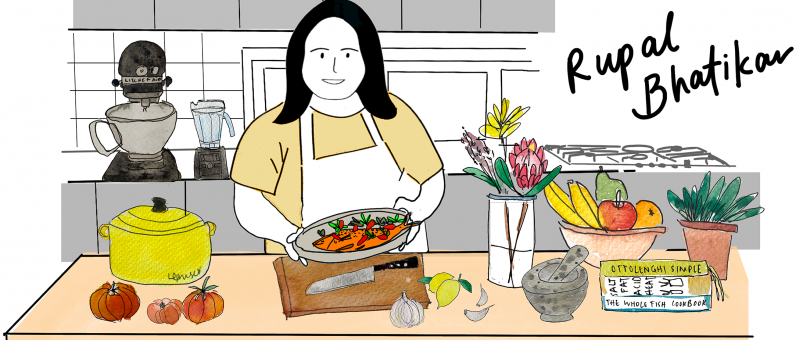The Goan Batat Fov Poha is a typical vegan savoury breakfast commonly enjoyed in homes across the state particularly during festivals. This dish is made with variations in a few states, such as Maharashtra and Madhya Pradesh. In Goa, it is often prepared for breakfast during Diwali or Ganesh Chaturthi festivals.

‘Batat’ means potato, and ‘fov’ refers to poha or flattened rice in Konkani. Goan Batat Fov Poha is made from beaten/flattened rice. It is the central ingredient celebrated in many forms in the falar (assortment of dishes) made for Diwali by Goans. Since it is Goa’s main agricultural crop, rice is in abundance and celebrated in many ways throughout the cuisine.
The fov (flattened rice) is rehydrated and then used for making sweet or savoury dishes. For the savoury version, we have made here, it is cooked with potatoes and with or without onion. The fragrance of curry leaves, the crunch from peanuts and brightness of lemon juice are some of the key flavours to the dish. Other variations include Dudatle Fov (cooked in milk like kheer), Takatle fov (tangy sweet beaten rice in buttermilk), Rosantle Fov (in coconut milk). This dish is almost always made vegan.
When made during festivals, it is typically served with Amadyachi Karam ( a cooked chutney made from Hogplums/Kedondongs) and Chanyachi Usal ( a stir fry made with white peas and coconut).
Tips and Tricks
The most important thing with poha is getting the texture right. You have to be careful to not over-hydrate it or it will be stodgy. That is why I always wash and drain it in a colander just minutes before adding it to the dish. It is also very important to rest it for 15 minutes after cooking before tucking into it. In that time, it absorbs all the flavour and becomes super fluffy.
When serving, I love adding lemon wedges and crispy sev (noodles made from chickpea flour) to the dish. Best enjoyed warm with a cup of tea/coffee.
Goan Batav Fov Poha
Ingredients
- 2 cups Poha/Beaten Rice (use the thicker variety)
- ½ cup Onion (thinly sliced – optional see notes)
- 2 Green Chillies (slit in the middle)
- ½ cup Potato (peeled and chopped bite size)
- 10-12 Curry Leaves
- ¼ cup Coriander leaves (garnish)
- ½ Lemon (juice – as required)
- 2 tbsp Vegetable/Canola Oil
- 1 tsp Mustard Seeds
- 1 tsp Cumin Seeds
- ¼ tsp Heeng (asafoetida)
- ¾ tsp Turmeric Powder
- ¼ cup Peanuts (crushed or whole – toasted)
- ¼ cup Water (hot)
- 1 tsp Sugar (to balance)
- Salt (to taste)
Instructions
- For making this recipe well – its best to get most of the prep done before hand. Slice the onions, peel and chop the potatoes, keep the dry poha in a colander ready.
- In a wok/pan, heat oil. Add the mustard and cumin seeds, let them splutter. Add the curry leaves, green chillies and the heeng. Add the onions and fry until they start to soften. You don't want them to take much colour.
- Add the chopped potatoes, turmeric, salt and mix to coat evenly. Add the hot water and cover and cook until the potatoes are 90% done.
- Run cold water through the poha in your colander and let the water run clear, be careful not to over-mix so the poha can retain its shape. Get rid of any excess water.
- Add the washed poha to the onion-potato mix along with sugar. Combine gently. Once you add the poha, it quickly absorbs any liquid in the cooking potatoes. Taste for seasoning and add the lemon juice. Mix through. Turn off the heat and let it rest for 15-20 minutes before you eat. This helps the poha to settle down and be separated and fluffy.
- Garnish with crushed peanuts and coriander leaves. Serve with some crispy sev.
Notes
For other delicious recipes from the blog, click here. If you make this recipe and love it, let me know in the comments below. If you are sharing on Instagram, please do tag me @rupalbhatikar.


Leave a Reply